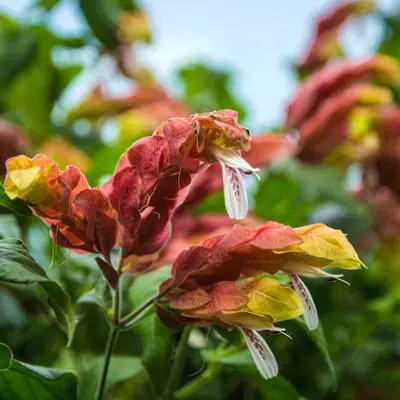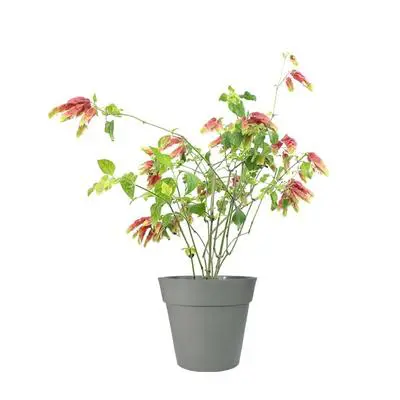Description
Justicia brandegeana is a popular indoor plant in humid environments, with a distinct feature of colorful flower clusters. It thrives best in USDA Hardiness Zones 8 through 11, where it is warm but protected by moisture during the summer. It can survive all year round in these areas, especially in tropical and semi-tropical environments.
Cultivated shrimp plants are not usually produced by pollination but rather stem cuttings or divisions. To germinate shrimp plant seeds, place them in shallow dirt and keep indoors at room temperature with indirect sunlight.
The flowers bloom for at least 10 months out of the year and have spindly stems that can grow to be about 3 feet and 3 inches in height. They bear drooping clusters of white two-lipped flowers surrounded by colored bracts which are usually shades of white, yellow, and red.
The red variety of the shrimp plant will also have white, pink, and green tones. Its leaves usually have an oval shape and are a bright green color. The shrimp plant grows in the form of a bush.
Shrimp Beloperone Guttata Care
The justicia brandegeana grows best in humid and tropical environments in soil that is loamy and sandy. Therefore, fertilizers are essential for the growth of the shrimp plant.
Mix fertilizers with the potting soil, water and feed it to the plant, or spread around the stem and add pure water. You should only use the last method once the shrimp plant reaches a height of 2 feet.
Because the shrimp plant is native to the forests in Mexico and parts of Central America, it should be grown in partial shade. It does not like extreme temperatures. Therefore, this plant must be protected during extremely hot or cold temperatures. Placing it indoors, especially during the harsh winter, can easily prolong their life and color.
Beloperone guttata can be pruned once a year in early spring. All of the leaves and branches of the shrimp plant will regrow during this time. They can be pruned by pinching, thinning, shearing, and rejuvenating.
Shrimp Beloperone Guttata Fruit and Harvesting
Shrimp plants do not produce edible fruit that can be harvested.
Shrimp Beloperone Guttata Advice
The shrimp plant is not prone to either disease or pests. Occasionally, red spider mites can cause the leaves to become yellow. Small and green insects known as greenflies can leave sticky residue on the leaves and distort them.
These pests can easily be treated with a general-purpose insecticide. Tiny brown or black spots on the leaves can signify leaf spot fungus. To prevent this, avoid planting the shrimp plants too close together in climates with frequent rain. Leave at least 2 feet of space between each plant.
The justicia brandegeana does best in sandy loamy and clay loamy soils and thrives in tropical and semi-tropical environments. Although the plant loves humidity, the soil must be well-drained. Apply fertilizer by either mixing it with the water or soil just before new growth on the plant begins.
Any general-purpose balanced fertilizer will work, and a slow-release product is best. The shrimp plant should be watered once or twice a week during the spring, fall, and winter, and 3 to 4 times a week during the summer.



What others are saying
There are no contributions yet.